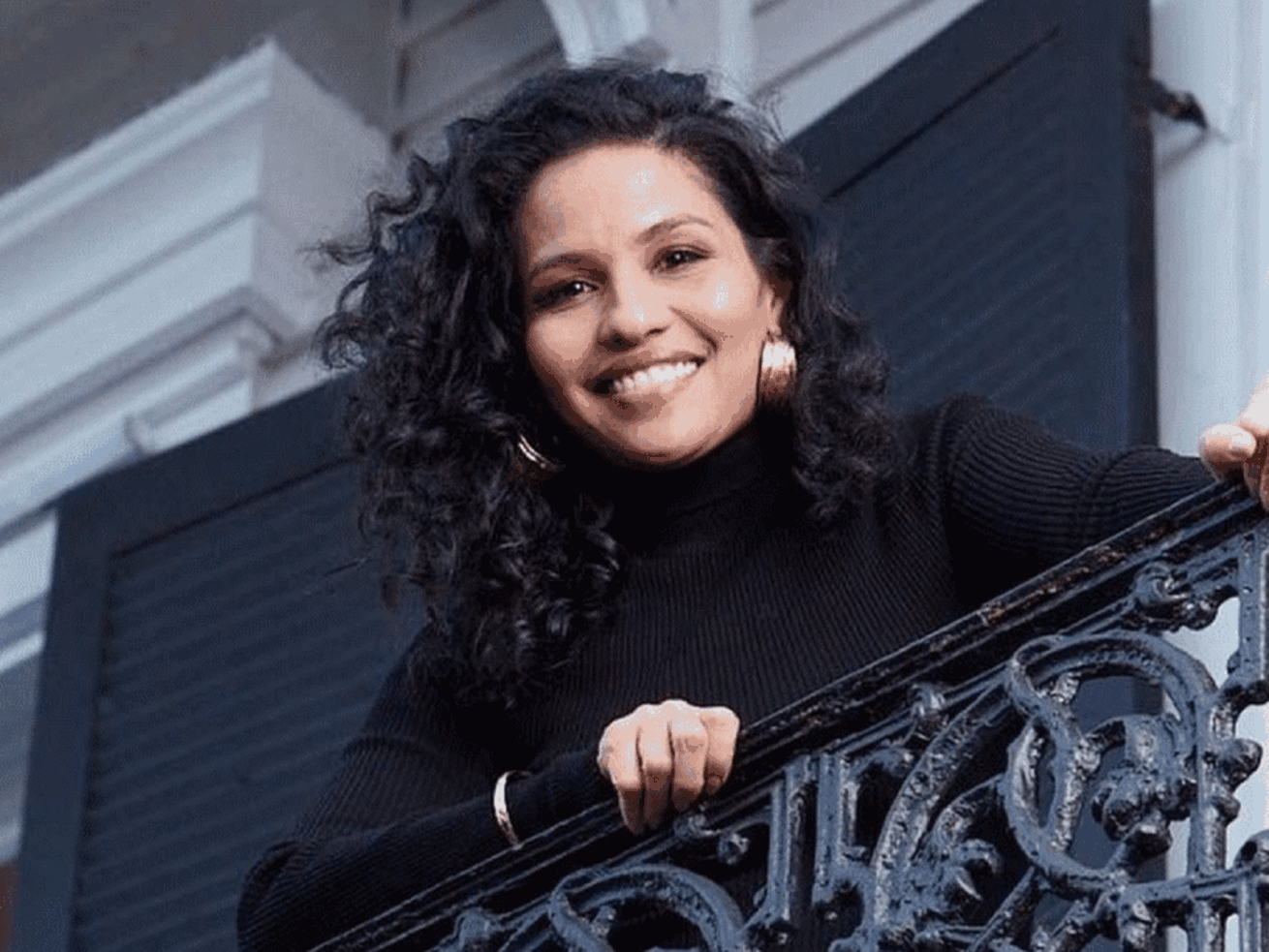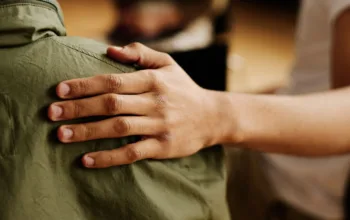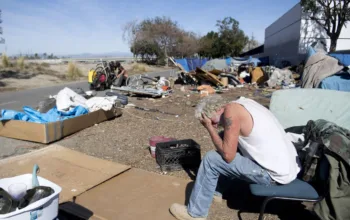Real World: Homecoming is a second chance for the seminal series, and for New Orleans castmate Melissa Beck.
“I just want you to know that I don’t like you. We’re not friends, because I find you to be very dishonest,” Melissa Beck (née Howard) said to Julie Stoffer the last time the two were on TV together on MTV’s Battle of the Sexes in 2003. “You got your smug little smile and think it’s all cute — you’re a backstabber and you’re a liar.”
Then, in a separate confessional, Melissa uttered a phrase that’s become a part of MTV canon: “You go messing with my money, you go messing with my emotions.”
Melissa and Julie had left their season of The Real World: New Orleans as best friends. Two years later, they were onscreen enemies, and Melissa was pigeonholed as “The Angry Black Woman.”
The Real World will go down as one of the more progressive shows in television history for documenting the lives of gay people, people of color, and other underrepresented groups. But in its 33-season run, it could also lean on stereotypes — like the Angry Black Woman — to tell those stories. Real World: Homecoming, a new weekly Paramount+ series starring Melissa and the rest of her New Orleans housemates, is trying to right those wrongs and allow the cast to reassess their experiences.
“Listen, there were abs and there was comedy — it’s iconic,” Melissa, now a 44-year-old mom of three living on Long Island, told Vox in a recent interview. Reflecting on her fight with Julie, she said, “My arm is so thin. My stomach is so flat. I had a great tan. And I was cussing somebody out. I have no apologies about that.”
Being able to laugh at yourself is a gift, but getting to this point wasn’t easy for Melissa. Looking back, it’s clear how The Real World failed Melissa and other Black women: Kameelah Phillips, who was on the show’s Boston edition, Arissa Hill on Las Vegas, Coral Smith on Back to New York. All were portrayed as versions of the Angry Black Woman, a stereotype rooted in the false and racist idea that anger is ingrained within a Black woman’s nature rather than a normal human response to a frustrating situation.
It’s not that The Real World and other reality programs can’t show Black women and women of color having angry moments. The problem is how that anger is so often presented.
Going back on the show is an opportunity for Melissa to tell her story and make sure viewers know she was more than the Black woman who cussed out the white girl.
“I also figured,” she said, “what’s the worst that could happen?”
In Melissa’s original season, she and her housemates took a swamp boat tour during which the white guide called one of the bird species by a name that included the n-word. Melissa was disturbed by the guide’s casual use of the word and upset with her castmate Jamie’s reaction. He made excuses for the guide, saying that he wasn’t purposely using the word in a hurtful way. Melissa tried in vain to explain that there is no way for white people to use that word and not have it be malicious.
She knew she had the right to be angry, but the editing questioned that and in turn emboldened fans. After the show aired, she was hounded by viewers. Social media didn’t exist at the time, but people sent their attacks by email.
“For months, I was called racist, that I’m race-obsessed, that I’m race-baiting,” she said. “Every racist thing that could be hurled toward me was, and I don’t think that as a cast — because we hadn’t kept in touch with each other over the years — they understood that perspective or the impact that had on my life.”
After the season aired, Melissa and some former Real World castmates alleged that Julie stole their opportunities on the lucrative (at the time) college speaker circuit. They claimed Julie would offer to speak at the schools for a smaller fee than her castmates, and the colleges — looking to save money — would book Julie instead. Because Battle of the Sexes producers didn’t offer viewers this context, the Melissa/Julie fight appeared to come out of left field.
“It’s the first time viewers had seen Melissa and Julie from The Real World, who left the show frolicking through a bed of roses. They came back, and now Melissa is screaming her head off,” Melissa said. “Instead of it being like, ‘Melissa was genuinely hurt by a friend who went behind her back and fucked with her money,’ it was, ‘Wow, Melissa’s really petty, I can’t believe she voted her off — Melissa’s a terrible person.’”
/cdn.vox-cdn.com/uploads/chorus_asset/file/23429705/realworlnew.jpeg)
Paramount+
Because she was seen as inherently rage-filled — an Angry Black Woman — anything she criticized became easy to dismiss, whether it was a situation that’s plainly racist like the one on the boat or her business dispute with Julie.
Critics and scholars note that while the Angry Black Woman caricature has roots in minstrel shows of the early 1900s, the radio show Amos ’n’ Andy — which debuted in 1928 — is what led to its popularization. Amos ’n’ Andy, a show about Black characters that was created and voiced by two white men, features Sapphire, an aggressive scold; “the Sapphire,” in fact, became shorthand for the Angry Black Woman caricature. The stereotype began to appear as an onscreen trope as the film industry took hold in the 1930s and carried over into the television age (Amos ’n’ Andy itself became a TV show in 1951).
Sustained, harmful pop culture portrayals like these generate real-world bias with real-world effects. Studies have shown that the Angry Black Woman stereotype has led to Black women receiving negative performance evaluations at work, less effective mental health treatment, and discrimination during maternity care.
The Real World premiered in 1992, more than 60 years after the premiere of Amos ’n’ Andy. It was an era when tabloid talk shows like The Jerry Springer Show, The Maury Povich Show, and The Jenny Jones Show were wildly popular — and heavily reliant on the Angry Black Woman and other racist tropes.
The Real World purported to be more thoughtful. It promised to show real-life young people dealing with real-life issues like sexuality, religion, and gender — and for some of its audience, the show was the first time they would get to “know” people that they might not encounter in their own lives.
It’s that last part that bothers some of the show’s Black female alums who spoke to Vox: In many ways, The Real World was progressive, educational, and highly influential, but it still relied on tropes and dynamics that privileged white people’s point of view at the expense of others.
First-season cast member Julie Gentry’s storyline was that she was a sheltered, small-town white girl from Alabama. In the final stretch of the season, Julie accused her Black roommate Kevin Powell of threatening her after she interrupted one of his personal phone calls. He refuted her telling of the story and explained to her and the other castmates that accusing a Black person of violence is a serious matter, citing the Rodney King trial (which coincided with the taping of the show). Julie called Kevin racist, psychotic, and capable of violence and said she didn’t want to be alone in the house with him. The roommates largely took her side. Julie and Kevin reconciled on their season of Homecoming, and Julie has talked in interviews about how her views on race have changed since her experience on the show.
“If we look at the storytelling of the original The Real World,” Melissa said, “the viewpoint that has always been the most important perspective was the doe-eyed white girl that walks into the house.”
Three seasons prior to New Orleans, on The Real World: Boston, Kameelah Phillips experienced something similar to Melissa. Kameelah, 44, is now an obstetrician based in New York City.
On the show, Kameelah was 19, taking a break from Stanford. She clashed with Sean Duffy, then 25, who went on to serve as a Republican Congress member from 2011 through 2019. In one of their final fights on the show, Kameelah told him that she was exhausted from having to teach him about Blackness and Black culture. In response, Sean compared her to Hitler.
“I definitely think I got a bit of the Angry Black Woman stereotype,” Kameelah said.
She theorized that because she butted heads with a white man whose storyline was about how he was sheltered and conservative, she came off as mad and aggressive. She says she was also portrayed at times as the “lonely” and “bitter” Black woman, as the show implied that she was hostile to her fellow Black castmate Syrus Yarbrough because he dated white women.
“That was a storyline I felt was created to run that narrative of Black women being alone and or being just so grumpy that they can’t get along, when that wasn’t the case at all,” Kameelah said. Like Melissa, she received a stream of racist abuse when the show aired.
“I remember checking DOS or some basic email and I had hate mail there. I was like, ‘Why? What is going on?’ I definitely experienced a negative backlash from strangers,” she said. “People called me horrible names, so I got to a point where I had very negative emotions about this show.”
Arissa Hill, who was on The Real World: Las Vegas, hasn’t watched her run on the show, which aired in 2002. Still, she’s heard plenty about how fans believe her season ruined the franchise. While Las Vegas was a ratings monster, producers were criticized by viewers and critics for turning the show into something overly argumentative and overtly sexual rather than the more introspective seasons of prior Real Worlds.
What strikes Arissa most about how her season was edited is that she and her roommates spent a lot of time having fun together and lovingly teasing each other. Most of that good-natured ribbing was left on the cutting room floor. “I believe we were fucking hilarious,” she said.
That the cast’s lighter moments didn’t make the cut didn’t necessarily surprise her, since she quickly understood the narrative producers were attempting to create. The season that made it to air featured love triangles, a pregnancy scare, and plenty of shouting and scolding. Arissa was often at the center of the confrontations, frequently fighting with her white castmate Frank Roessler, whom MTV described as “wide-eyed” and someone who “makes friends easily.”
Their dynamic wasn’t unlike that of Kameelah and Sean, or Melissa and Julie. The Angry Black Woman and Wide-Eyed Young White Person are stereotypes that simultaneously shortchange both of the people they supposedly portray, but it’s inherently more damaging to be portrayed as angry — which is seen as a permanent character flaw — than being sheltered, which one will presumably grow out of.
“Do we have the Angry Black Woman or somebody who is just trying to assert themselves or assert a boundary that has been crossed?” Arissa asked.
Arissa is working on a docuseries that’s inspired by her experience after The Real World stopped filming. Like Melissa, Arissa didn’t know how to navigate her image post-show. Every single time her season re-aired during a marathon or in syndication, there was a new round of people who knew Arissa only as that person — the villain, the scold, the fight-starter — on Las Vegas.
“I want the opportunity to reclaim my likeness and rebrand myself, and tell stories the way that I’d like to tell them,” she said. “I am not the only person that feels this way. There’s a space for a story like this, and it’s been a long time coming.”
After deciding to reenter The Real World fold, Melissa stressed to producers that she was concerned that the emotional labor of explaining and teaching people about race was going to fall on her shoulders yet again. She was also worried that the show wouldn’t explore the other aspects of her life. “I wanted to be able to be a whole and full person outside of who I am as my race,” she said.
/cdn.vox-cdn.com/uploads/chorus_asset/file/23425983/RWNOLA_308_111721_EK_0329_R.jpeg)
MTV Entertainment
Homecoming executive producer and showrunner James Knox said he fully understood Melissa’s worries. Knox didn’t work on the original season, and he has no qualms discussing how the 2000 series and Battle of the Sexes fell short. Knox, a queer Black man, noted that Julie was the main character, with Melissa and Danny (Danny came out on the show as gay) used as accessories to her story.
“That season was all through Julie’s perspective,” he said of Real World: New Orleans. “I needed to allow for Melissa and Danny to lead their own stories independent of Julie being naive.”
The centering of the white experience and the use of the Angry Black Woman trope was, and continues to be, a problem in reality television. Following The Real World, it was perpetuated in series from Survivor to The Apprentice to the various Real Housewives franchises. What’s changed over the last decade or so is that we’re less inclined to buy into them. Audiences, reality show participants themselves, and even the people who make reality television now, are all more aware and ready to call out these lazy portrayals.
“Back then, we didn’t have the language to describe what was going on. We didn’t have ‘diversity and inclusion.’ We didn’t use the word ‘equity.,” Kameelah said. “We’ve, in the past 20 years, developed the tools to call things out when we see injustices — not just on TV.”
Knox told Melissa that Homecoming wasn’t about any kind of redemption narrative for her; this also wouldn’t be a sympathy edit to make up for what happened in 2000. What he and his team wanted to do is tell the story of seven strangers picked to live in a house — and how their lives had changed once the cameras moved on.
Part of what convinced Melissa to sign on was the fact that, in addition to Knox, there were many people of color involved in making Homecoming. With a more diverse crew and an audience that’s fluent in topics of identity like race and class, Knox said, there’s now a way to tell fuller stories that — while not perfect — do not have the same blind spots as the show did before.
The first episode of Homecoming revisits the Melissa and Julie fight. This time around, Melissa was given space to talk about the situation and the hurt it caused. The episode also included a moment in which Melissa’s castmates discussed the damage that can be done when a white person calls a person of color a liar.
“Melissa has had to have this conversation a lot, and that’s tiring — that’s a burden and it shouldn’t be her burden,” Melissa’s castmate Kelley Wolf told Vox. Kelley said that living with Melissa again, and reliving those moments, made Kelley more empathetic to Melissa and brought the two closer than when the show first aired.
Melissa said that, in her first run on MTV, she didn’t have the language to easily express what she knew to be true about race, identity, and the way her castmates were treating her back in 2000.
“I was a messy, vulnerable 22-year-old girl from the South, who was awkward, biracial, with bad teeth, who had a lot of feelings, and who was coming into her own in terms of identity,” Melissa said. She has unapologetic affection for that version of herself, someone who approached the experiment earnestly, if naively. Melissa kept all that in mind as she filmed this reunion.
“Did it hinder the process of me being able to be real? I don’t think so.”
Author: Alex Abad-Santos
Read More



